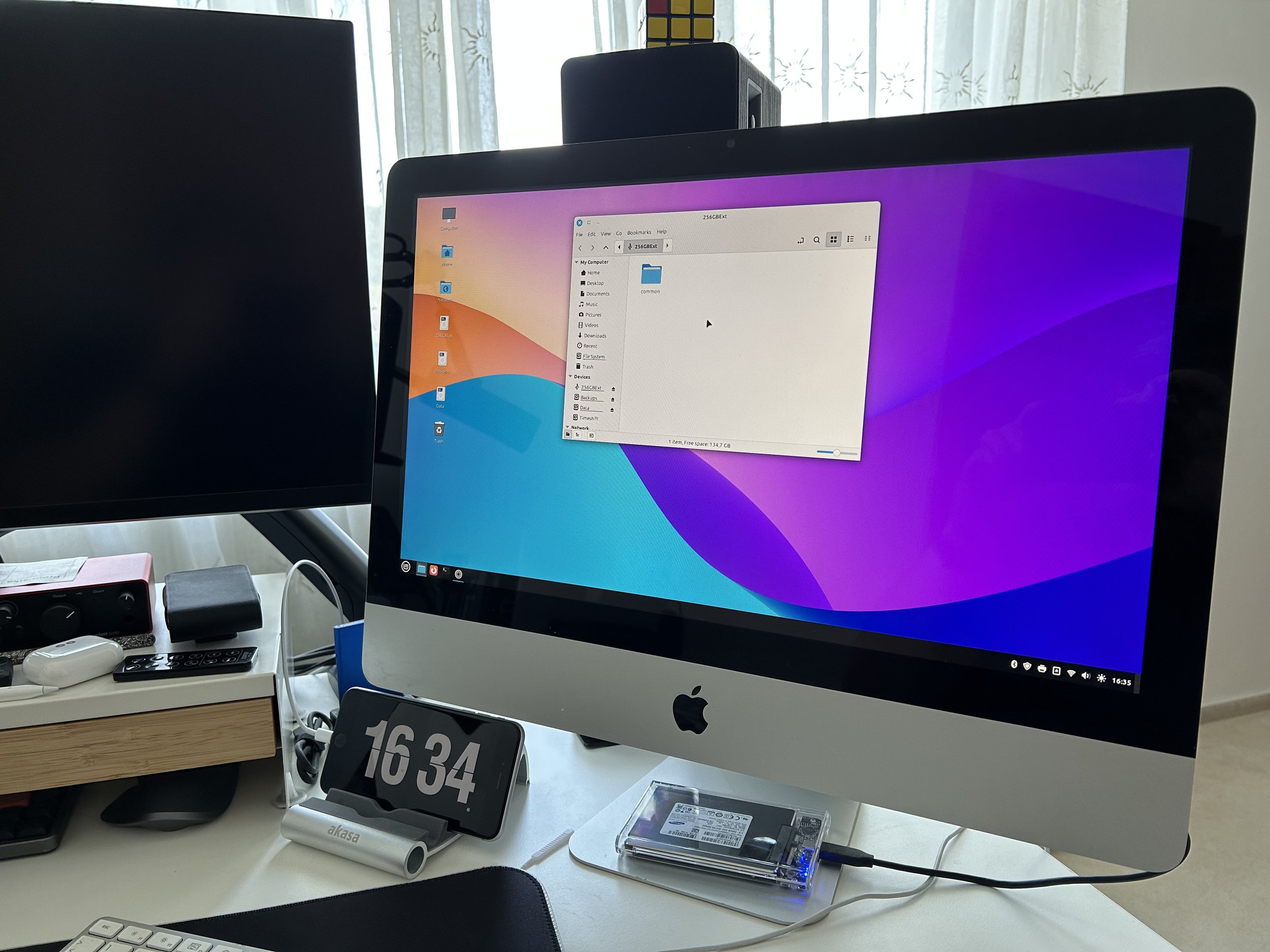Getting Started With Linux (Mint)
If you’ve been reading this blog (when I post that is), then you’ll know that I have been dabbling with Linux off and on.
I recently decided to make a, how do I put this? More firm commitment to using it at home as my main computer or at least for now a main computer, rather than just something that I would install to play with in the short-term and then just move on from.
So why am I going down this path?
Essentially it’s part of my wider belief in owning your stuff. You may have seen my posts regarding my iPod(s) and my music and this is something similar. I want to have a computer that is mine, where my files live and that can’t be disabled or be forced to become obsolete.
The Hardware
On that note, the computer I am actually using for this is a 21.5” Mac Mini 2011, with an Intel Core i5-2400S, 24GB of RAM, a 240GB SSD and a 1TB HDD.
2011 Apple iMac
21.5” Mac Mini 2011, with an Intel Core i5-2400S, 24GB of RAM, a 240GB SSD and a 1TB HDD
I added the additional RAM and the SSD myself, there are guides on how to do this over at iFixit and the upgrades will help the computer to feel faster, more responsive and extend it’s lifespan a little more.
This computer officially as far as Apple is concerned is now considered to be obsolete, it officially runs High Sierra and can’t be updated past that. There are options, I could install OpenCore legacy patcher for example, the team here have accomplished amazing things in terms of getting old hardware to run newer Apple operating systems. However there are still always going to be hardware limitations that means certain versions of the OS will be unavailable.
The Alternative(s)
Another option as you have probably guessed is to install Linux, traditionally Linux isn’t as taxing on hardware as Windows or Mac OS, which means that it can breathe new life into old hardware and enable you to keep using it for long after Apple or Microsoft would like you to upgrade your computer.
Theres more than one Linux.
There are many different flavours of Linux, called Distros, there is a lot of history as to why there are so many but the main thing that is worth knowing, is that traditionally Linux distros are open source and the software they run is open source. This means that no one company owns it and the software is that runs on it is also open source and available to download for free.
I can delve into this more in a separate post if you’re interested, for now though, I’m going to go with Linux Mint. Reasons why? It’s easy to setup (it can be installed in less than 10 minutes on this particular iMac), it works well with many computers and seems to work very well with old iMacs.
So now that we know what we have for hardware and what flavour of Linux we’re going to be installing, keep an eye out for my next article going over the installation process.
